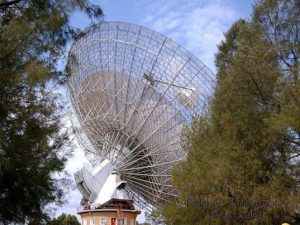
Image: Parkes Radiotelescope, New South Wales, Australia, where all but one FRB was discovered
Fast Radio Bursts, another first: This time the FRBs repeated!
The report of Fast Radio Bursts, on February 25, 2016, was but a week old when it had already become the subject of a rebuttal by Edo Berger of Harvard University. The report, which appeared on Nature.com, stated it was the first time FRBs had been confirmed and repeated over time. Scientists, like Berger, were scrambling to identify the source.
The reports of these newly detected FRBs raised many questions. According to the Nature article, only 16 FRBs had been discovered including the first FRB discovered in 2007. What made these discoveries possible? Which scientists and observatories have been involved in the detection of FRBs? What is their significance in undestanding outer space?
Most importantly to most of us, what, exactly, is a Fast Radio Burst, anyway?
In this article curation series, we’ll look at what scientists consider to be the significance of fast radio bursts, how they have been detected, and what observatories have been pivotal in evaluating the Fast Radio Bursts recently observed.
First repeating Fast Radio Burst discovered–really?
Last week [on 2/25/16], scientists reported a huge step in the hunt for mysterious cosmic phenomena known as Fast Radio Bursts (FRBs). But now their results are being called into question by others in the field. Amid that controversy, a new paper has just hit the presses: For the first time ever, they’ve found an FRB that keeps repeating. Published Wednesday in Nature, the study provides evidence that FRBs come from a source other than the massive star collision suggested by last week’s researchers.
FRBs are bright radio flashes that last just a few milliseconds, and until now have never been known to repeat. Scientists believe they might occur thousands of times a day, but to date less than 20 events have been detected. Last week’s study – also published in Nature – claimed to have pinpointed the exact origin point of an FRB for the first time ever.
. . . .
Now some scientists are questioning whether the signal used to track down the galaxy associated with the FRB was actually related to the radio burst at all. And this new study adds another possible point of contention: Based on the apparent age of the galaxy pinpointed in the first study and the strength of the radio burst, researchers had suggested a collision of massive stars as the cause of the mysterious signal.
But massive collisions don’t repeat – and now it seems apparent that FRBs can and do.
“I don’t think the final nail is in the coffin on that,” Jason Hessels, corresponding author of the latest study, told The Post in reference to the other team’s research.”There are more observations that need to be done, but it seems less convincing than it did last week.” It is possible, he and other experts said, that there is more than one kind of FRB out there – some sent out by massive crashes in space, and others coming from different, more sustainable sources.
Read the complete article at WashingtonPost.com
For more about what Fast Radio Bursts are and how they operate, see the next page.
